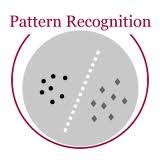Capturing large fields of view with only one camera is an important aspect in surveillance and automotive applications, but the wide-angle fisheye imagery thus obtained exhibits very special characteristics that may not be very well suited for typical image and video processing methods such as motion estimation. This paper introduces a motion estimation method that adapts to the typical radial characteristics of fisheye video sequences by making use of an equisolid re-projection after moving part of the motion vector search into the perspective domain via a corresponding back-projection. By combining this approach with conventional translational motion estimation and compensation, average gains in luminance PSNR of up to 1.14 dB are achieved for synthetic fish-eye sequences and up to 0.96 dB for real-world data. Maximum gains for selected frame pairs amount to 2.40 dB and 1.39 dB for synthetic and real-world data, respectively.
翻译:仅用一台照相机捕捉大片观测场是监视和汽车应用的一个重要方面,但广角鱼眼图像因此获得的非常特殊的特点可能并不非常适合典型的图像和视频处理方法,如运动估计等。本文件介绍了一种运动估计方法,该方法在通过相应的回射投影将部分运动矢量搜索工作移入视野域后,使用一种等固再投法,以适应鱼眼视频序列的典型辐射特征。将这种方法与常规的翻译动作估计和补偿相结合,在合成鱼眼序列和现实世界数据中,光导PSNR平均收益达1.14 dB, 最高可达0.96 dB。选定框架对合成和真实世界数据的最大收益分别为2.40 dB和1.39 dB。





